|
|
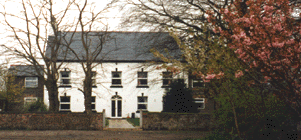 |
| Penketh Hall |
|
The name Penketh is an old English word probably dating back to before Roman times. The name Penketh is a compound made up of the Celtic words of "Pen" meaning "end or edge" and "coed" meaning "woods". The end of the wood in this case is Burtonwood that was once a substantial forest. As both parts of the compound in Penketh are British we can assume that the place name of Penketh could be older than the name of Warrington.
If your name is Penketh there a good chance that one of your distant relatives could had lived in Penketh and been related to the lords of the manor, the Penketh family. Penketh was originally a hamlet of Great Sankey. There was a family called Penketh that lived in Penketh Hall from around 1216 to 1624. One of the first mentions of the Penketh family was William de Penketh who was witness to a charter in 1240. In 1280 Gilbert and Robert Penketh became joint lords of the Manor of Penketh.
| |
|
The Penketh family of Penketh must have been of some standing as there was mentioned made to them in the Herald's visitations of 1567. The most well know member of the Penketh family was Thomas Penketh who died in 1487. Thomas Penketh was a friar and Head Hermit of St. Augustine, England. The great writer William Shakespeare mentioned Thomas Penketh for his part in a conspiracy with Sir Edmund Shaw to over throw the English throne in favour of Richard, Duke of Gloucester, who later became Richard the Third. Thomas Penketh was the only member of the Penketh family to be mentioned in " The Dictionary of National Biography".
In 1624 Richard Penketh sold Penketh Hall to Thomas Ashton this was the demise of the Penketh family as they lost their wealth and the title of Lord of the Manor.
|
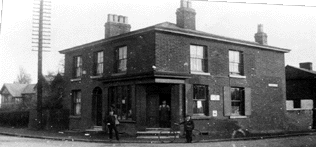 | | Old Penketh Post Office. |
|
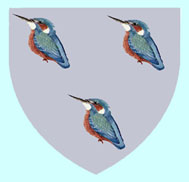
|
A Representation of the Penketh
Coat of Arms taken
from Warrington Priory.
|
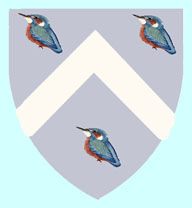
|
A Representation of the Penketh
coat of Arms taken
from Warrington Parish Church.
|
|
The Coat of Arms of the Penketh family "Argent, three popinjays Azure, sometimes with a chevron between them (Three kingfishers on a silver background)" was recorded as being present in a window of the Warrington Friary. Nowadays there are only two representations of the coat of arms of Penketh, these representations are both found in Warrington Library one was taken from the window of the Warrington Priory and the arms with the white chevron was taken from Warrington Parish Church.
The name Penkethman is the name given to a servant of a Penketh, both the names Penketh and Penkethman have very strong ties to the village of Penketh.
At the moment there does not appear to be any Penketh's living in Penketh and according to the Warrington Telephone directory only 16 Households have the name of Penketh in the Warrington / Widnes area.
Although Penketh is now quite large it is still a village, with the local square at Honiton Square, and the main road ( Penketh Road) running through the heart of the village.
A few hundred years ago Penketh was situated on part of the London to North Western Carriageway, Penketh was though of as running from the Red Lion on Penketh road to the Crown and Cushion, on the corner of Warrington road and Stocks Lane. The village stocks were situated outside the Wesleyan Chapel on Stocks lane opposite the Crown and Cushion.
|
|
One of the main influences in the growth of Penketh was the Sankey Canal (the first industrial canal in Britain, built by 1757), "The Sankey" was a very busy canal when in operation, there is now a restoration of the canal
(scars.org.uk) under way.
There was usually a great number of canal boats lined up along the canal waiting for the right tide, sometimes the barges lined up for over a mile along the canal. Legend has it that there was once a Canal warden whose loud calls of "FLOOD TIDE" could be heard for a great distances warning the sailors of a dangerous rush of water. |
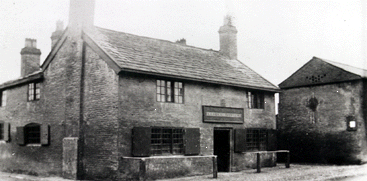 |
A Somewhat different looking
Red Lion Hotel.
|
|
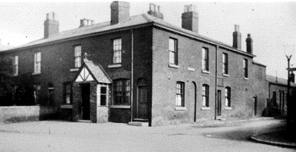
| | The Old Crown and Cushion |
|
Near the site of the old Ferry swing bridge (now a static bridge) on the Sankey Canal stands the Ferry Tavern situated on the Banks of the River Mersey at Fidlers Ferry, the Ferry Tavern dates from 1762 and has quenched the thirst of many travellers after crossing the Mersey on the Ferry from Moore. (Unfortunately the Ferry crossing has now closed). The name of Fidlers Ferry is said to come from the owner of the land Adam Le Vicleur who's name was abbreviated and became Violer which was abbreviated further to Fiddler and at that point on the Mersey was a Ferry crossing to Moore hence the name - "Fidlers Ferry".
|
|
Running alongside the Sankey Canal is a railway line and at Fidlers Ferry was Fidlers Ferry and Penketh Railway Station, built in 1852 and situated on Station Road the station has now been demolished but the old railway keepers cottage still stands.
Penketh Yacht Haven (marina) is situated a little further down the Sankey Canal
from the Ferry Tavern, The yacht Haven holds the claim to fame of being the
location of the manufacture of concrete ship, the first barge built there, the
ELMARINE, was deliberately sunk in about 1984, under the Duke of Lancaster at
Mostyn on the Dee. Two 1000 tonners, the CRETECAMP and the CRETECOVE were both
launched successfully and worked until the 20s. They were among a large number
of dumb barges and tugs built of concrete by the Admiralty - one or two are
afloat still, and some were towed across the Atlantic. The idea didn't catch on
because steel once again became cheap and plentiful at the end of the war.
(Information supplied by Dave Long -
http://www.scars.org.uk/)
Penketh Hall is situated at the bottom of Hall Nook, now the farmhouse of Ditchfield's Farm, the Hall was the ancestral home of the Penketh's of Penketh. The Hall has been modernised many times, and it is believed that the outbuildings was once the Hall itself when these fell into ruins the present hall was built.
|
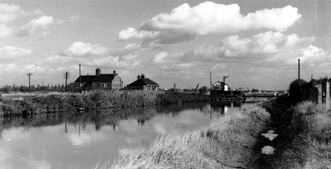 | View from the back of The Ferry
Tavern over the canal to the
Old Fidlers Ferry and Penketh Railway Station. |
|
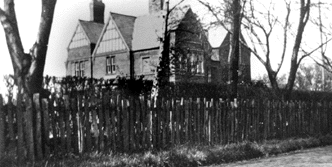 | Saint George's Children's Home, in Hall Nook,
now the site of Woodley Fold. |
|
Around 150 years ago Hall Nook was one of the most rural parts of Penketh, and became the playing ground for many of the local children who had moved into the shelter of the trees from Greystone Heath. Greystone Health was occupied by wild donkeys that spent their days grazing on the Gorse bushes.
There was an agreement in 1868 to break up Greystone Heath covering 100 acres to give 90 acres to commercial use, 6 acres for recreation ground and 5 acres for a cemetery. Now all that remains of Greystone Heath is Greystone Recreation Ground, Withenshaw Recreation Ground and Penketh Cemetery. Hall Nook was also the site of St George's Children's home, the Home was demolished in the 1970's and the cul-d-sac of Woodley Fold now takes its place.
|
|
Around 1800 - 1850 the inhabitants of Penketh were mainly employed as Bakers (The Baker family who occupied one of Penketh's Windmills just off stocks lane), Cabinet makers, Cobblers (the Gandy's were a large cobbling family exporting shoes to the United States), Brewers (at the local Penketh Brewery), or boatmen and hauliers on the Mersey and the Sankey Canal. The River Mersey running through Penketh use to be clear and was a source of some excellent fishing, brimming with fresh Salmon. Just over what is now Gate Warth Nature Reserve there was a large island (Richmond Island) in the middle of the Mersey, this disappeared roughly 100 years ago.
In the late 19th century came The Penketh Tanning Company Limited at the time this was the major employer in Penketh and the surrounding area, The tannery supplied all the amenities that the workers needed including; housing, canteens, a bath house, football pitches, bowling green and dance hall. It is not clear exactly when the tannery buildings were first built but I can confirm after speaking to Mr John Withinshaw, (the last owner of the tannery), that it was originally a Brewery prior to becoming a tannery in the 1800s when it was bought by the Parker family who, being of the Methodist faith, and not wanting a Brewery in his village, changed it into a Tannery.
The Withinshaw family bought the tannery about 1880 and 3 generations later, in May 1958 the decision to stop Tanning was made, so no more hides were put into what was a long process, and the tannery closed in the early part of 1959. The Tannery buildings were occupied by Polycell for a few years after the Tannery closed then when Polycell moved away it was sub let to a number of small businesses. The Tannery buildings were finally demolished about 1996/7 & houses built on the site. (Tannery Researched by John Ditchfield February 1999.)
|
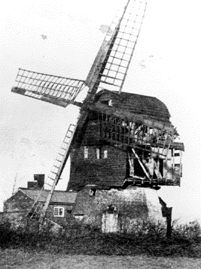 | The old Penketh Windmill
situated just off Stocks Lane. |
|
|
| 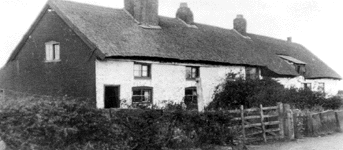 | | Old Cottages on Meetings Lane. |
|
Penketh was also the site of the Penketh Productive co-operative Society limited which cut the tanned leather before it was shipped to the buyer, this process much reduced the amount of leather a client needed to purchase and reduced any waste. The Penketh tannery has now been demolished to make way for a modern housing estate, the Tannery tower which was a Penketh landmark for many years was a sad loss.
Meetings Lane acquired its name from the Quakers meeting House which is situated on Meetings Lane the meeting house was one of the first public meeting places in Penketh and the gravestones of the old Quakers can still be seen in the gardens of what is now a modernised meeting house (Penketh Community Centre) at the back of Honiton Square.
|
|
One of Penketh's first schools was The Friends School on Stocks Lane which was founded in 1834 and due to the changing need of the Quakers was closed a century later. The building has since been used for a children's reform centre and is now part of a retirement home.
The Manna House on Warrington Road, opposite Penketh Gardens was originally opened as the village school in 1860 in memory of Margaret Gaskell who was killed in an accident at the age of eight in 1859. The school was closed in 1908 and since then the Manna House building has been used for many other purposes including a tea room and a meeting house.
|
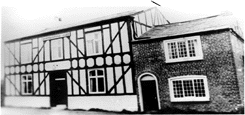 | The Sportsman's Arms with the cottage on the
right, which has now been demolished. |
|
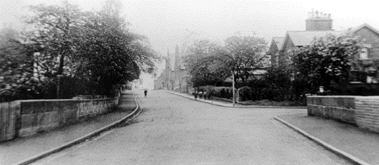 | View down Chapel Road,
over Penketh Brook Bridge. |
|
Penketh County High School is now situated on Heath Road, the old building of the school was once Penketh Fire Station.
The Parish records for Penketh were kept for over 300 years in the Penketh chest. The chest originally kept in the Red Lion Hotel where Parish Council meetings were held at the start of the 20th century was moved to Warrington Baths. In 1980 the chest was moved to Warrington Local History Library, and in 1986 the chest was moved to the back room of Penketh Library where it rests today. The documents that were kept in the chest included Parish Council minutes, Constable's accounts, Highway accounts, rates and bills and Poor relief records.
|
|
During the 1939/45 war the BBC used a house in Stocks Lane Penketh as a Broadcasting Studio. The present day owners have requested that the exact location is not published but I have their permission to reveal the following.
The house (Greenbank) was originally built as a farm house by John Knowles in the late 1860's and acquired by the BBC in the early part of the war for use as a broadcasting studio.
The BBC made many modifications to the building which included strengthening the floors of some of the bedrooms to take the weight of their equipment and the cellar was re-enforced to make it bomb proof. |
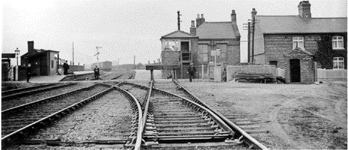 | Now Demolished Fidlers Ferry
and Penketh Railway Station. |
|
Two of the upstairs rooms were sound proofed for use as studios and when today's owners moved in, the doors to these rooms were still labelled "Studio One & Studio Two".
Exactly what was broadcast from here is not clear but it is thought that talk shows, comedy & satire programs such as Itma, and some news items were among those broadcast from Penketh.
The rumour that this was a secret broadcasting station can not be true because the surviving residents of that area knew this house as "The BBC House" during the war so it could hardly have been a secret and these people still think of it as the BBC house.
It has been suggested that because of the fortification of this house that it may also have acted as a relay station for the RAF Burtonwood Air Base but this can not be confirmed.
The BBC finally sold the house at auction in 1949. Since then it has had two owners.
(BBC Researched by John Ditchfield December 1998.)
In 1965 Warrington Road was extended into a dual carriageway, this was partly due to the construction of Fidlers Ferry Power Station, which when built was the largest power station in the country.
The picture of the old Post Office on the corner of Chapel Road was probably taken when the building was a branch of the District Bank. The original Penketh Post office was located in the end terrace house next door to the shop at the end of Broadoak Avenue (Now a Hairdressers)
The Post office was transferred to the top of Chapel Road just after the last war when District Bank moved out in Mid 1940s.
The post Office moved again in 1965 to it's present location across the road when the dual carriageway was built and the old building was demolished. (Post Office research JD FEB 1999)
|
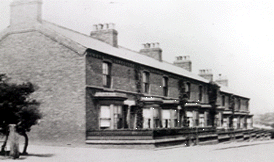 | A View along old Station Road
shortly after the terrace houses were built.
|
|
To find out more about the History of Penketh in the 20th Century, click here to view the recollections of Penketh resident Frank Thomas, as recorded by John Ditchfield.
Penketh has changed a lot from the quaint little village it once was, with its clear River, local ferry, Greystone heath, and meeting houses. But today Penketh remains a village, people still go to the local shopping area, now at Honiton Square and the village still has its scenic walks along the Sankey Canal and over the new nature reserve.
|
|

